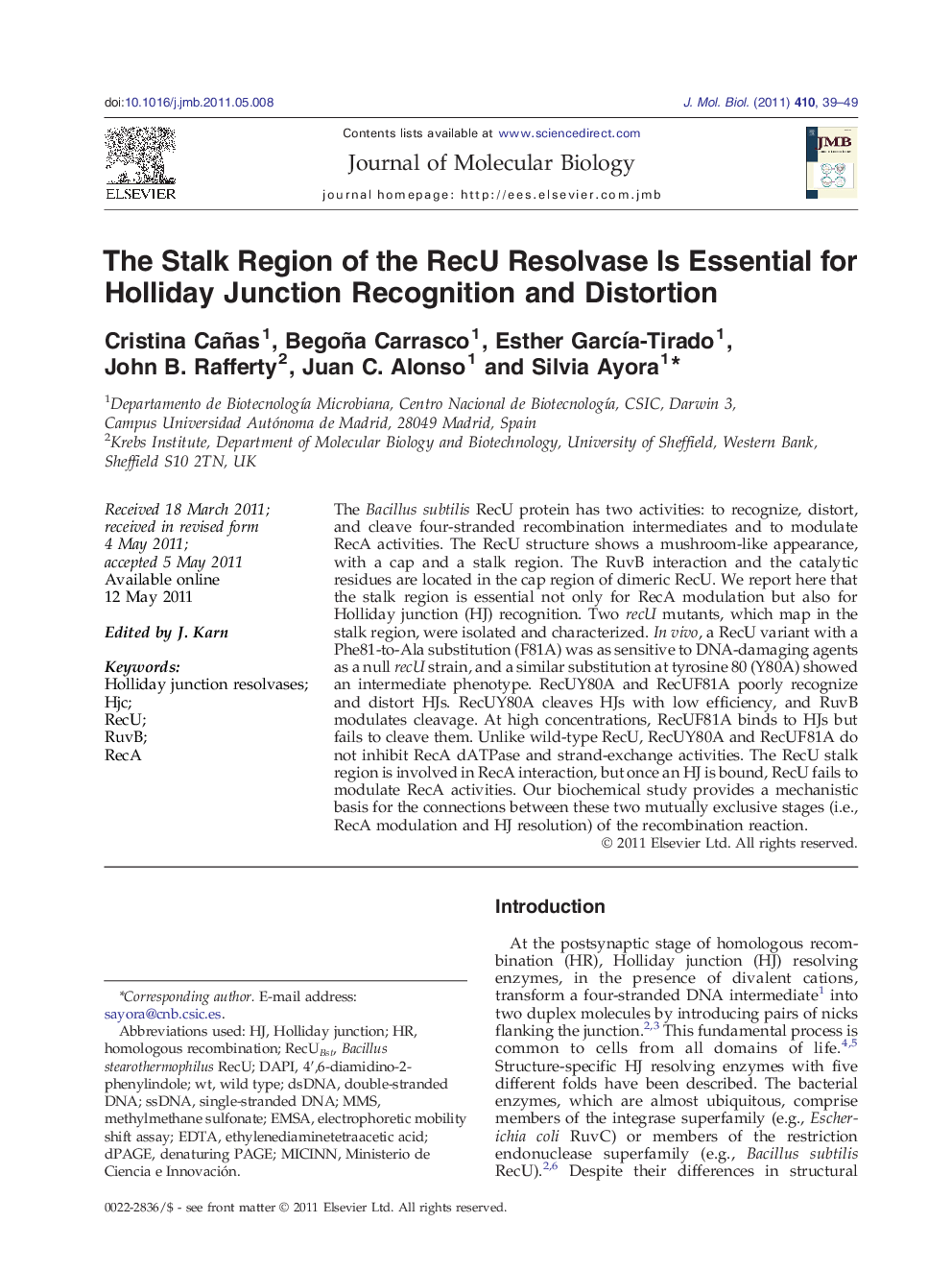| Article ID | Journal | Published Year | Pages | File Type |
|---|---|---|---|---|
| 2185165 | Journal of Molecular Biology | 2011 | 11 Pages |
The Bacillus subtilis RecU protein has two activities: to recognize, distort, and cleave four-stranded recombination intermediates and to modulate RecA activities. The RecU structure shows a mushroom-like appearance, with a cap and a stalk region. The RuvB interaction and the catalytic residues are located in the cap region of dimeric RecU. We report here that the stalk region is essential not only for RecA modulation but also for Holliday junction (HJ) recognition. Two recU mutants, which map in the stalk region, were isolated and characterized. In vivo, a RecU variant with a Phe81-to-Ala substitution (F81A) was as sensitive to DNA-damaging agents as a null recU strain, and a similar substitution at tyrosine 80 (Y80A) showed an intermediate phenotype. RecUY80A and RecUF81A poorly recognize and distort HJs. RecUY80A cleaves HJs with low efficiency, and RuvB modulates cleavage. At high concentrations, RecUF81A binds to HJs but fails to cleave them. Unlike wild-type RecU, RecUY80A and RecUF81A do not inhibit RecA dATPase and strand-exchange activities. The RecU stalk region is involved in RecA interaction, but once an HJ is bound, RecU fails to modulate RecA activities. Our biochemical study provides a mechanistic basis for the connections between these two mutually exclusive stages (i.e., RecA modulation and HJ resolution) of the recombination reaction.
